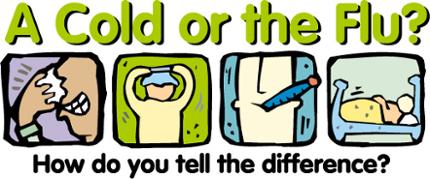Good day guys! We are back again with a health post as we have decided to enlighten you all about a common illness not only in our part of the world but all over: common cold. There is no one that has not had a cold before at one point in our lives or even very frequent. Esther Ajidahun has decided to share her article with us so please read, understand this post and also share. Enjoy!
Common cold, simply known as cold, which is very annoying to have . I personally tag it my worst illness. It is a viral infection that is contagious. Medically, it is referred to as upper respiratory tract infection because it affects the upper respiratory tract most especially the nose and the throat, sinus and voice box may also be affected. It is transmitted by infected airborne droplets or by direct contact with infected secretions. It is caused by a number of viruses. Over 200 different types of viruses cause common cold with rhinovirus causing approx. 10% – 40% of adult colds. Other viruses are adenovirus, coronavirus, respiratory syncytial virus and parainfluenza.
Different viruses cause cold and also new cold viruses develop constantly. That’s a major reason why the body never builds up resistance against all of them and also why colds are frequent and reoccurring.
Common symptoms include:
Cough
Sore throat
Sneezing
Runny nose
Stuffy nose
Hoarseness
Earaches
Fatigue
Loss of appetite
Watery eyes and
Low grade fever
For more details see common cold symptoms: what you might feel
How is it transmitted?
It is spread either by direct contact with infected secretions from contaminated areas or by inhaling the airborne virus after someone sneezes or coughs.
Person to person transmission occurs when an individual who has been infected with cold blows or touches their nose and then touch something or someone else. You the healthy one then becomes infected after your contaminated hands touch your nose, eyes or mouth. The cold virus can live on objects such as pens, books, and telephones etc. for several hours and it is contagious from the first two to three days of illness. These increase the chances of you acquiring a common cold.
Some people, including me think cold comes only when there is a cold weather but this does not apply all the time. Cold weather doesn’t cause cold but it contributes to the prevalence as many of the viruses seem to thrive well in the low humid conditions. Some other factors can be responsible for a cold infection like:
- Age: infants and young children are more likely to develop the common cold because they have not yet developed immunity to many of the viruses causing it.
- Low immunity: people who have weakened immune system either due to an illness or even pregnancy tend to develop cold easily. Also people with fatigue are susceptible.
- Close proximity can also cause the spread.
- Seasonal variation: people develop it more and easily during, rainy season or during fall and winter (for those in colder climates)
Common cold versus flu

Most people confuse being down with a flu with being down with common cold. Flu is caused by influenza virus, while common cold is not. Their symptoms are similar but patients with cold have milder illness than patients with flu. Flu patients appear more ill and have fast onset of illness with fever, chills, headache, body ache, vomiting, dry cough and extreme weakness. A Laboratory test can be done for correct diagnosis
Treatment
Over the counter medication such as throat lozenges, throat sprays, cough drops, and cough syrups . acetaminophen and ibuprofen can be used to treat common cold and Antibiotics are only necessary when symptoms persist . It can even be managed by home remedies
Antibiotics role

It is not a key to a cold. Antibiotics are effective only against illness caused by bacteria and cold are caused by viruses. They can also cause severe allergic reactions and sometimes common cold can lead to a bacterial infection (pain around the face and the eyes, coughing up colored mucus that persists for more than a week). Antibiotics can be necessary when this occurs.
When should I contact a doctor?

Common cold can be treated at home and managed with over the counter medications. However, if more severe symptoms develop like severe headache, neck stiffness, vomiting, abdominal pain, difficulty in breathing, chest pain, confusion, common cold complicationsand failure to improve after 10 days. Consult a doctor
Duration:
Certain viruses can take up to 10 days to completely resolve.
Complications
Complications that may arise from the common cold include development of a bacterial ear infection (otitis media) or bacterial sinusitis. In people with asthma or Chronic obstructive pulmonary disease (COPD), the common cold can sometimes cause an aggravation of their illness leading to shortness of breath and increased wheezing. Though uncommon, pneumonia can sometimes develop as a secondary infection in individuals with the common cold.
Can it be prevented?
Most important thing is to avoid contact with infected individuals.
Frequent and thorough hand washing is very important as it destroy viruses acquired from touching contaminated surfaces.
Disinfect potentially infected surfaces and personal object.
Avoid sharing utensils and try to use disposable items if the family has cold.
Encourage individuals to cover their nose and mouth when coughing or sneezing to prevent transmission of the virus.
There is currently no effective vaccine and cure against common cold.
Where to find more information about common cold
Centers for Disease Control and Prevention (CDC)
https://www.cdc.gov/features/rhinoviruses/
U.S. Department of Health and Human Service, National institutes of Health
https://nccih.nih.gov/health/flu/indepth











1 comment